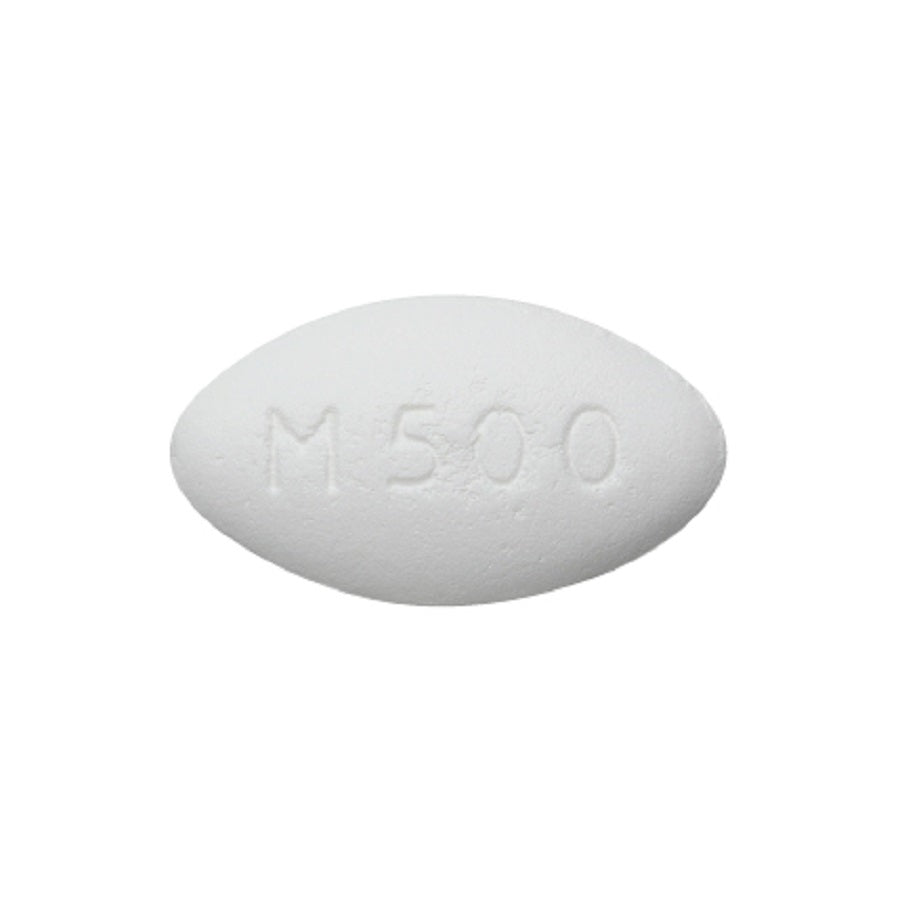VALEANT
GLUMETZA (Metformin)
GLUMETZA (Metformin)

Couldn't load pickup availability
What is this medication?
Metformin, Fortamet/Glucophage/Glumetza/Riomet/Glycon
Antidiabetic Agent, Biguanide
Officially indicated for treatment of diabetes mellitus type 2, but is also prescribed off-label for use in gestational diabetes mellitus, polycystic ovary syndrome, and weight management.
“ALERT: US Boxed Warning
Lactic acidosis
Postmarketing cases of metformin-associated lactic acidosis have resulted in death, hypothermia, hypotension, and resistant bradyarrhythmias. The onset of metformin-associated lactic acidosis is often subtle, accompanied only by nonspecific symptoms such as malaise, myalgias, respiratory distress, somnolence, and abdominal pain. Metformin-associated lactic acidosis was characterized by elevated blood lactate levels (>5 mmol/L), anion gap acidosis (without evidence of ketonuria or ketonemia), and increased lactate/pyruvate ratio; and metformin plasma levels generally >5 mcg/mL.
Risk factors for metformin-associated lactic acidosis include renal impairment, concomitant use of certain drugs (eg, carbonic anhydrase inhibitors such as topiramate), ≥65 years, having a radiological study with contrast, surgery and other procedures, hypoxic states (eg, acute congestive heart failure), excessive alcohol intake, and hepatic impairment.
Steps to reduce the risk of and manage metformin-associated lactic acidosis in these high-risk groups are provided in the full prescribing information.
If metformin-associated lactic acidosis is suspected, immediately discontinue metformin and institute general supportive measures in a hospital setting. Prompt hemodialysis is recommended.”
How does this medication work?
Metformin is believed to exhibit multiple mechanisms of action which ultimately decreases gluconeogenesis (hepatic glucose production) in the liver, decreases intestinal absorption of glucose and improves the insulin sensitivity of muscle which increases peripheral glucose uptake and overall utilization. Metformin also exhibits an anti-androgenic effect in women with insulin resistance
How should I take this medication?
Diabetes Mellitus Type 2
Oral (Immediate Release): Start with an initial dose of 500mg once to twice daily or 850mg once daily. Adjust the dosage by 500mg or 850mg increments every 7 days to minimize gastrointestinal adverse effects. The usual maintenance dosage is 1g twice daily or 850mg twice daily; maximum daily dose is 2.5g daily.
Oral (Extended Release): Start with an initial dose of 500mg to 1000mg once daily. Adjust the dosage in 500mg increments every 7 days to minimize gastrointestinal adverse effects. The maximum daily dose is 2g daily.
How to Take: Take metformin with a meal to reduce gastrointestinal adverse effects such as nausea and vomiting. Do not crush, split, or chew the extended release tablets.
Is Metformin, Fortamet/Glucophage/Glumetza/Riomet/Glycon Safe to Use During Pregnancy: Metformin can be used as an alternative medication to treat gestational diabetes. However, it may be necessary to adjust the dosage of Metformin during the third trimester of pregnancy due to changes in the pharmacokinetics.
What should I watch for while using this medication?
Use with caution in patients who are at risk of developing lactic acidosis
Do not use in patients with unstable heart failure
Do not use in patients with hepatic and/or renal impairment
What if I miss a dose?
If you miss a dose of medication, try to take it as soon as possible. However, if it is almost time for your next dose, take only that scheduled dose. Do not take double or extra doses.
How should I store this medication?
Keep out of the reach of children at all times. Store at room temperature, 59 to 86° F (15 to 30° C). Protect from light. Keep the container tightly closed. Properly dispose of any unused medication after the expiration date.
What are the possible side effects of using this medication?
Well tolerated, most side effects are transient and mild to moderate in nature. The most common side effects include:
>10%:
Gastrointestinal: Diarrhea (IR: 12% to 53%; ER: 10% to 17%), nausea and vomiting (IR: 26%; ER: 7%), flatulence (4% to 12%)
Infection: Infection (21%)








